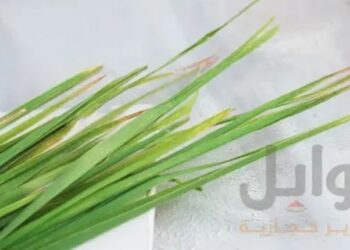Taxidermy, the art of preserving animals for display, has intrigued humans for centuries. From exotic mounts to quirky small creatures, taxidermy for sale has evolved from a niche hobby to a popular item among collectors, home decorators, and museums alike. Whether you are an avid collector, a museum curator, or someone interested in enhancing your home with a unique conversation piece, purchasing taxidermy can be an exciting venture. However, before you embark on this journey, it’s crucial to understand the craft itself, the legalities involved, and the best places to purchase these works of art.
Understanding Taxidermy
At its core, taxidermy is the process of preserving an animal’s body, typically through stuffing or mounting, to create a realistic representation of the animal. This intricate process involves cleaning and preserving the skin, replacing the internal structure with a frame or artificial stuffing, and carefully sewing and sculpting the animal to retain its natural shape and expression.
Historically, taxidermy has served many purposes. In the 18th and 19th centuries, it was a way to document wildlife for scientific purposes, particularly as part of natural history exhibits in museums. In the modern world, taxidermy is used more as an art form, often displayed in homes, offices, or as part of larger collections.
The Legal Aspects Of Taxidermy
When considering purchasing taxidermy for sale, it’s important to be aware of the legal aspects surrounding the acquisition of preserved animals. Many countries, including the United States, have strict laws and regulations governing the sale of taxidermied animals, especially when it comes to endangered species.
Endangered Species Laws: In many regions, it’s illegal to sell or buy taxidermied animals that come from endangered or protected species. The U.S. Endangered Species Act (ESA) and international agreements like the Convention on International Trade in Endangered Species (CITES) regulate the trade of wildlife. Always ensure that the seller can provide proof that the animal was legally obtained.
Permits and Documentation: Some species can be legally traded, provided the seller has the appropriate permits and documentation proving that the animal was ethically sourced. When purchasing taxidermy, be sure to ask the seller for the necessary certificates and proof of legality.
State and Local Regulations: Apart from federal laws, states and municipalities may have their own laws governing the sale of taxidermy. These laws can range from restrictions on certain animals to complete bans on the sale of taxidermied wildlife. It’s essential to check your local regulations to ensure you’re not violating any laws.
Different Types Of Taxidermy For Sale
Taxidermy comes in a variety of forms, from small rodents to majestic big-game mounts. The type of taxidermy available for sale can vary greatly depending on the seller and the animal species. Here are some of the most common types you may encounter:
Big Game Mounts: These are the most iconic forms of taxidermy, featuring large animals such as deer, elk, and bears. These pieces are often displayed in grand living rooms, man caves, or hunting lodges. A well-executed big-game mount can be a stunning centerpiece for any room.
Bird Taxidermy: Birds are another popular choice for taxidermy enthusiasts. From the striking feathers of a pheasant to the regal display of an eagle, bird taxidermy can add a touch of elegance and nature to any space. Smaller birds, such as songbirds, can also be found in taxidermy collections.
Exotic and Rare Species: Taxidermy for sale can sometimes feature exotic or rare species, such as tropical animals or even mythical creatures (like the now-rare Tasmanian Tiger). These rare and unusual pieces often attract collectors looking for something unique or historically significant.
Small Mammals and Rodents: Smaller animals such as foxes, rabbits, and squirrels are also commonly found in taxidermy collections. These pieces often appeal to collectors or those looking for smaller pieces to complement their décor.
Insects and Marine Life: While less common, insect and marine life taxidermy is also available for sale. These displays typically appeal to science enthusiasts or collectors interested in entomology or marine biology.
Where To Buy Taxidermy
When looking to buy taxidermy, it’s important to do your research to ensure that you’re purchasing from a reputable seller. Here are some of the best places to purchase taxidermy for sale:
Specialized Taxidermy Shops: Many specialized taxidermy shops or online retailers offer taxidermied animals for sale. These shops often have a wide range of items, from common mounts to rare pieces, and they are usually experienced in the legalities and craftsmanship involved in the sale.
Auction Houses: High-end auction houses like Sotheby’s or Christie’s sometimes auction off rare or valuable taxidermy items. If you’re a serious collector or are looking for something particularly rare, auctions can be a great place to find unique pieces.
Estate Sales and Antiques Stores: Occasionally, taxidermy items are available for sale at estate sales or in antique stores. These can be a goldmine for vintage or antique taxidermy that might not be readily available elsewhere.
Taxidermy Collectors and Artists: Some taxidermy artists and individual collectors may sell pieces directly, often through social media platforms like Instagram or Etsy. If you’re looking for custom pieces, reaching out to a taxidermy artist for a commission could be an option.
What’s Next?
Taxidermy for sale represents a fascinating intersection of art, science, and nature. For those considering buying a preserved animal, it’s essential to understand the craft, the legalities involved, and the variety of options available. Whether you’re a seasoned collector or a first-time buyer, approaching taxidermy with respect for the animals, awareness of laws, and a clear understanding of the piece’s origin ensures a fulfilling and ethical purchase.











